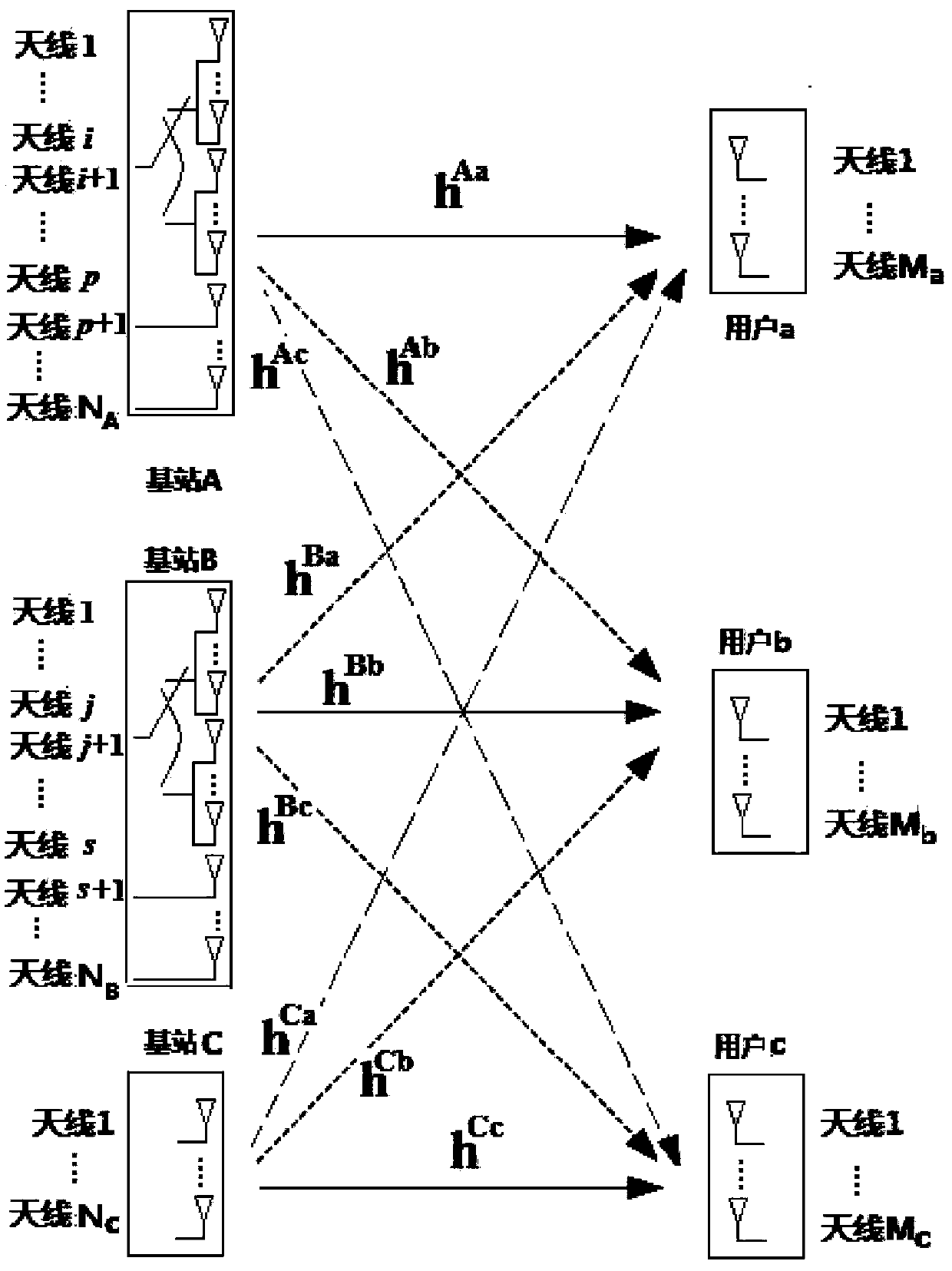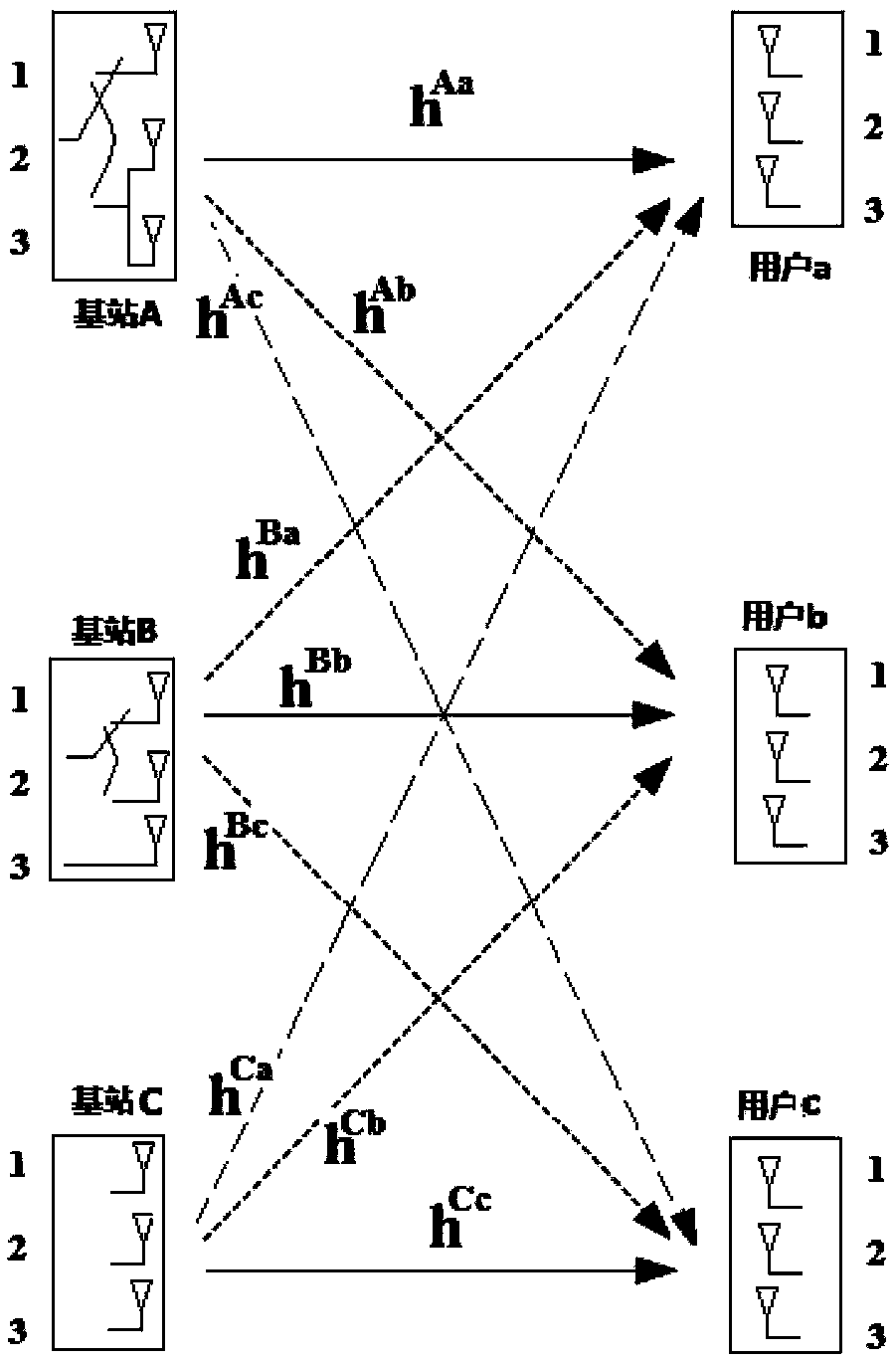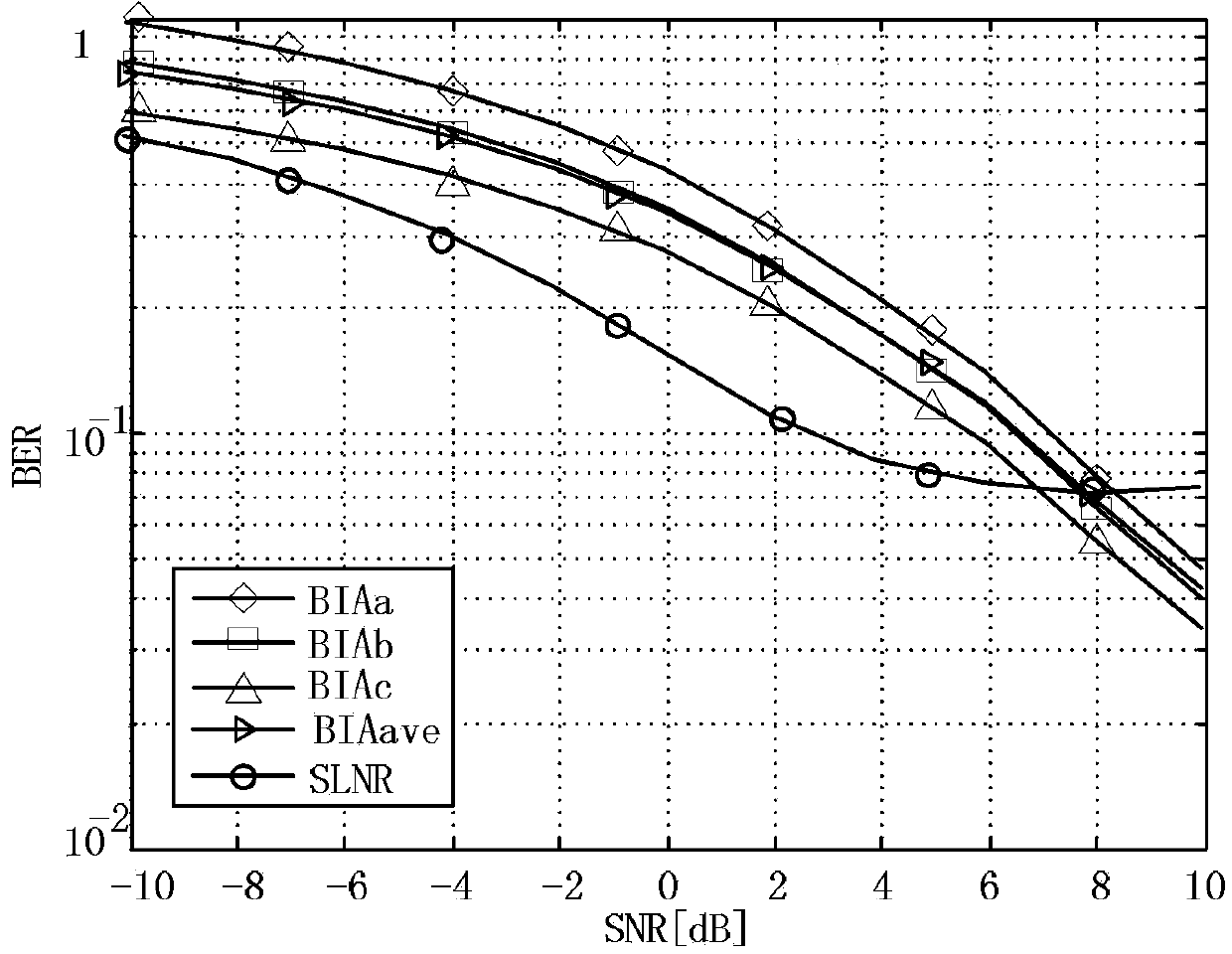Three-cell blind interference suppression method based on energy efficiency priority
A three-cell, blind interference technology, applied in the direction of reducing energy consumption, baseband system components, and shaping networks in transmitters/receivers, can solve problems such as increasing system overhead, reduce system overhead, improve energy efficiency, algorithm low-complexity effects
- Summary
- Abstract
- Description
- Claims
- Application Information
AI Technical Summary
Problems solved by technology
Method used
Image
Examples
Embodiment
[0177] figure 2 It is a schematic diagram of the system configuration in the embodiment of the present invention. Such as figure 2 As shown, in this embodiment, base station A is configured with 3 transmitting antennas, and each antenna is switched for transmission every moment; Switching is performed at two times; base station C is configured with 3 transmitting antennas, without inter-antenna switching; users are configured with 3 receiving antennas, and when the number of antennas of base stations A, B, and C and the number of antennas of each user are different from this example, they can also be similar processing is universally representative. Table 2 is a table of data transmission schemes of the base station in this embodiment.
[0178]
[0179] Table 2
[0180] Each base station sends data to user a, user b, and user c respectively according to the above data transmission scheme, and each user receives the signals sent at each sending time in turn, and recovers...
PUM
 Login to View More
Login to View More Abstract
Description
Claims
Application Information
 Login to View More
Login to View More - R&D
- Intellectual Property
- Life Sciences
- Materials
- Tech Scout
- Unparalleled Data Quality
- Higher Quality Content
- 60% Fewer Hallucinations
Browse by: Latest US Patents, China's latest patents, Technical Efficacy Thesaurus, Application Domain, Technology Topic, Popular Technical Reports.
© 2025 PatSnap. All rights reserved.Legal|Privacy policy|Modern Slavery Act Transparency Statement|Sitemap|About US| Contact US: help@patsnap.com



